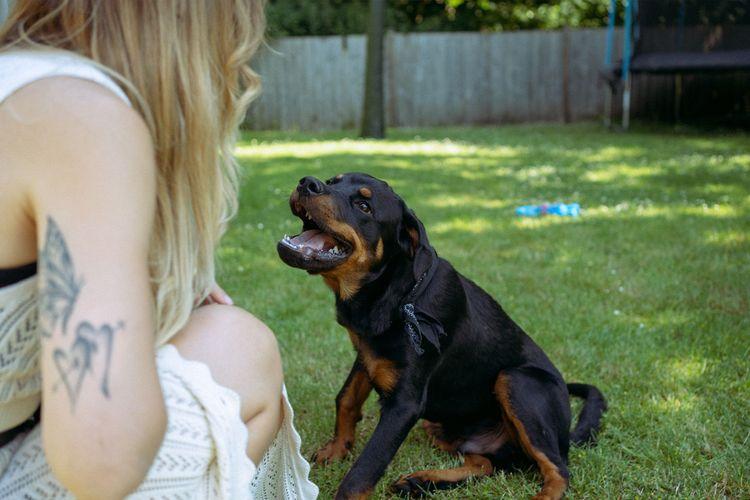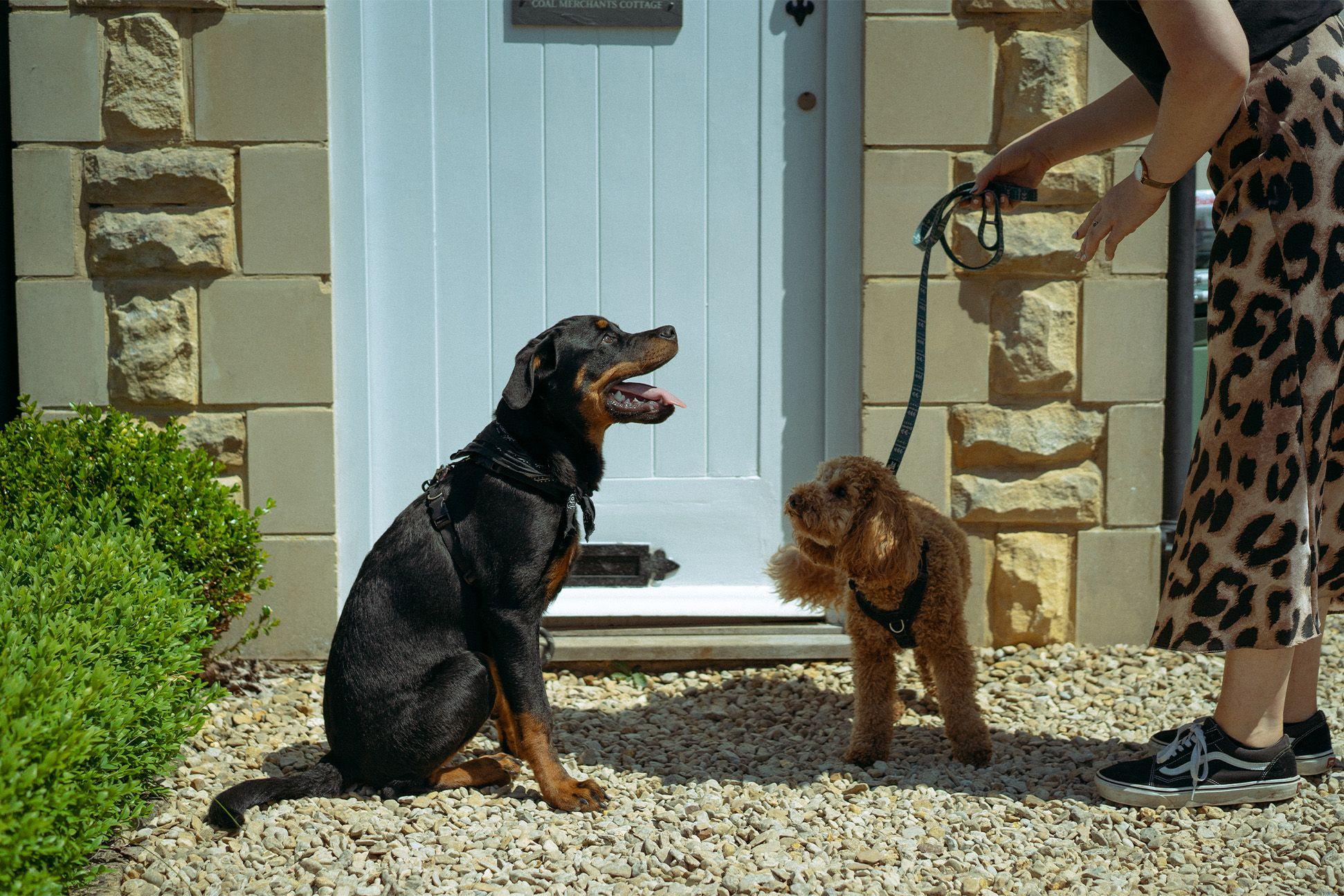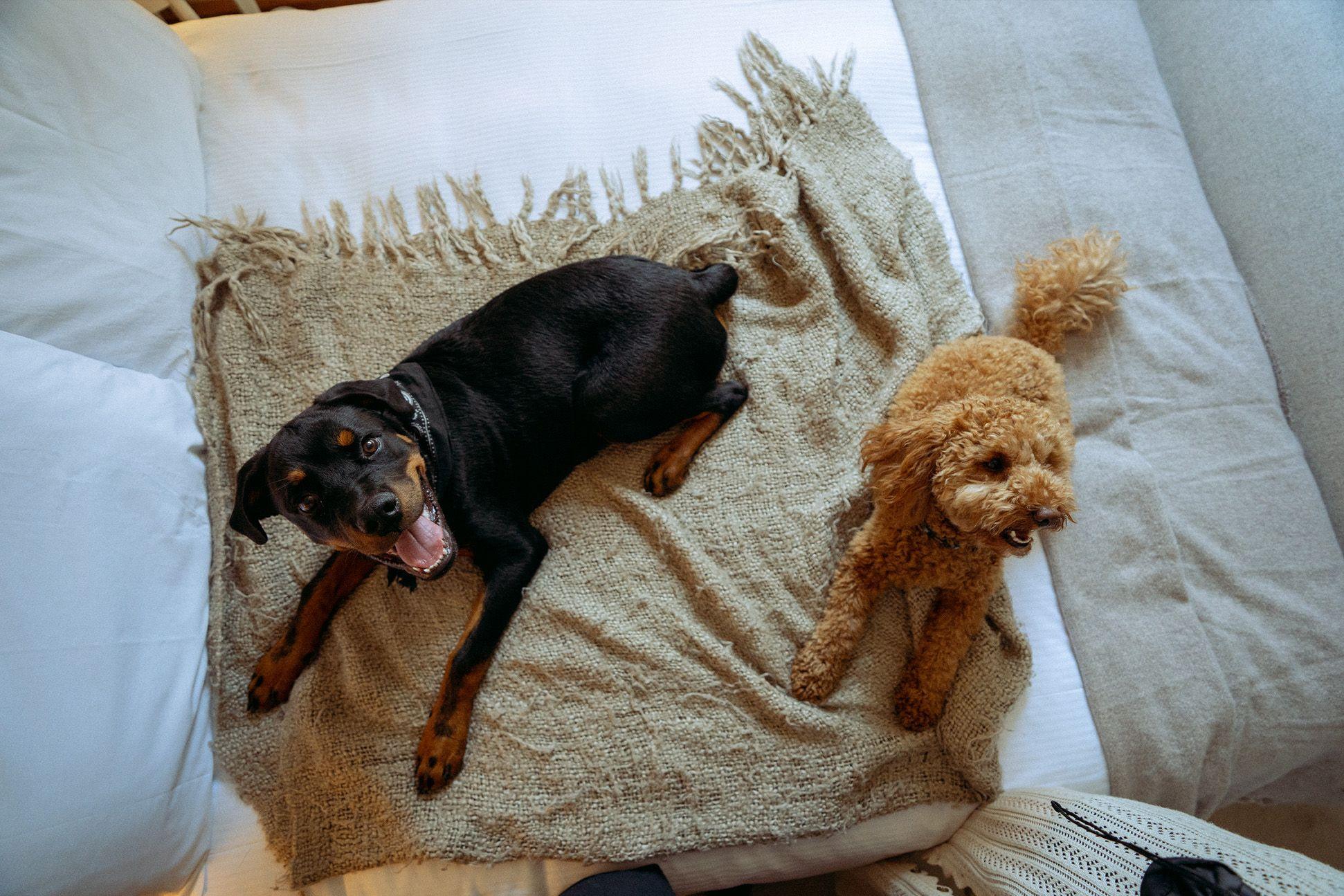
Moving house with dogs: tips to help them adjust
5 minute read
Start moving things around before moving day
Before you even begin packing, start leaving your packing boxes out so the dog gets used to the smell of them. If you’re going to be moving furniture around, try moving a couple of pieces into different rooms – perhaps a chair or a small table – then moving them back a few hours or maybe days later. “This starts to desensitise them to familiar items being in strange places,” says Emma. “But you must leave all of their things in their usual place, because that stuff is going to come with you on moving day.”
If your dog is particularly anxious, you might need extra tools to help them cope. “I really recommend using plug-in pheromones like Pet Remedy. They can take a couple of weeks to kick in, so it's worth getting one or two plugged into the areas where your dog spends most of their time before you start packing up. And if there is any possibility that you can get them plugged into the new home as well beforehand, that’s really good. If not, you can use pheromone sprays and then put the plug-ins in the new home when you arrive.”

Take them elsewhere on moving day
Whether it’s with a family member close by or at their usual dog boarder or daycare facility, it’s best to have the dog entirely out of the way on moving day – especially if you’ve got packers or movers coming in to load vans. All the activity of moving day can be incredibly stressful for the dog, and it’s an extra stress you don’t need either. Make sure you take all the dog’s things (bedding, toys and bowls) with you in your vehicle, and unpack it as soon as you arrive so it’s ready for them when you bring them into the new space.
“It can be really tempting to buy new beds, new blankets and new toys, or at least wash all of the old stuff for the new home. But don't, because all of that old familiar smell will be really comforting and reassuring to your dog,” explains Emma. When you introduce them to the new house, take them straight out into the garden first as they’re likely to want to do some marking. “Then bring them in and let them take their time in exploring the new home, and go with them and let them sniff everything and see that you’re there.”
Don’t change their sleeping spot
To help your dog settle in their new home, it’s important to keep things as similar to your previous routine as possible. If you’re not moving far away, try walking in familiar places for a while before exploring the new walks. The same goes for where they sleep and eat in the new home. “If the dog’s bed was previously in the living room where all the activity was going on and that’s where they used to settle down, don’t go ‘Oh this is great now we’ve got a utility room, we can shut the dog in there,’” says Emma. “Just until they’ve settled in, keep it as similar to the old set up as possible.”

Go back to basics on toilet training & separation
When you move, your dog might not automatically associate their new garden with the place they need to go for toileting. “They will need to figure out where the doors and exits are,” says Emma. This means you might have to go back to basics, taking them out at toileting times on the lead in the garden and praising them with treats when they have done their business. Separation anxiety can become an issue once you’ve moved to a new place, so leaving them with plenty of enrichment toys for short periods to begin with is essential.
Don’t forget to register at the local vets
This might seem obvious, but it’s often the last thing on your mind when moving house. If you can register at a new vet in advance of moving, you’ll have no worries and no last-minute panic if anything goes wrong during your move. It’s handy to join the local Facebook groups and to find out if there are any regional dog owner groups for the new area, too, so you can familiarise yourself with other local owners, walking routes and etiquette.